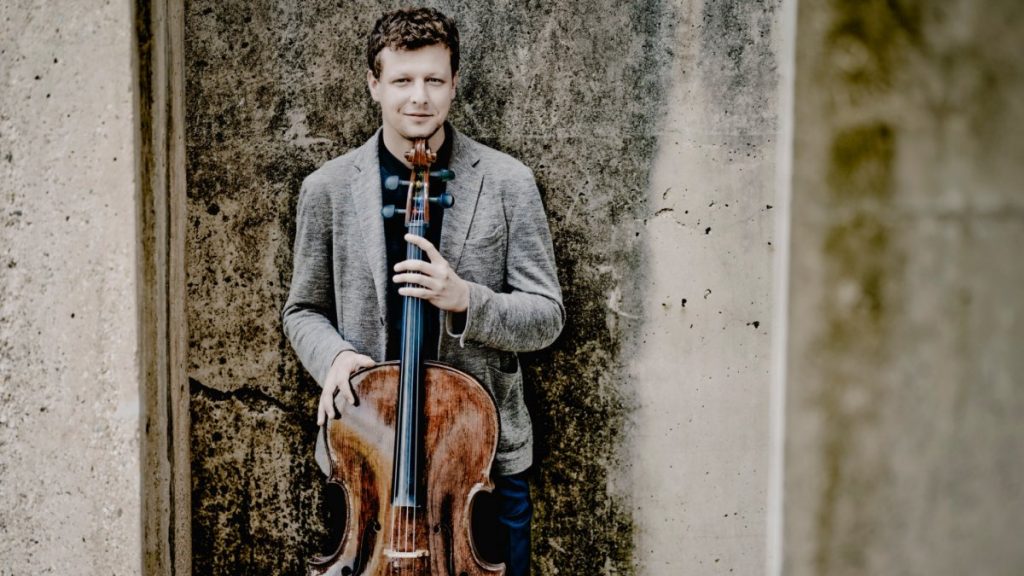The Liszt Ferenc Chamber Orchestra celebrates its 60th anniversary, which, in addition to being a significant occasion for reflection, also calls for continuous renewal. The chamber ensemble is one of Hungary’s most prominent classical music exports, known and appreciated worldwide, performing with the greatest artists of the international music scene. On the occasion of the anniversary, we spoke to István Várdai, the equally highly acclaimed cellist-artistic director. We talked about the past, about the changes the music profession has gone through in the last decades, and of course how a self-identical artist can adapt to all this.
We meet István Várdai after a monstrous six-hour rehearsal in the buffet of the Óbudai Társaskör. He is tired, but as always, he exudes directness; a young artist without mannerisms, who is willing to accept his insecurity and uncertainty.
„I always try to be authentic, I usually talk to everyone in the same way, everyone gets the same from me,” he answers when I ask him if he considers it important to be present on different areas of social media. „Yes, today we can’t afford to ignore these things, but for me it’s particularly important that the image we present of ourselves doesn’t deviate from the real us. If this image is false, it will come out sooner or later.”
According to Várdai, this self-identity is also an essential aspect at the orchestral level, since
in today’s information and orchestral dumping, the only way to stand out is to identify one hundred percent with what you play and how you play it.
„String orchestras have undergone a major transformation in recent times. The role of ensembles such as I Musici di Roma, the Munich Chamber Orchestra (Münchener Kammerorchester), or the Liszt Ferenc Chamber Orchestra has been taken over by historical orchestras, but they can only build their repertoire from a well-defined period. We have also had to adapt to these new challenges: we use transcriptions and modern works as well as tried and tested pieces from the classical or Baroque period. We want to expand the orchestra, which will radically increase the number of musical compositions we can perform, and therefore invite many more soloists. We don’t only like to work with superstars, we also want to give opportunities to young artists who are not well-known in this country, who we know represent a high quality, so we can present them to our audience.”
Várdai’s goal is to put his ensemble back on the map where they belong. „Well, you’ve been there before, haven’t you?”, I wonder, as I list the many collaborating artists, from Martha Arge to Emmanuel Pahud.
„The situation is not so clear-cut,” he continues. „We do play with the biggest international stars, and even accompany them on long tours, but it often happens that they record the pieces they play with us on stages all over Europe with another chamber orchestra. The competition is amazing. We have to face up to this new situation, we have to measure ourselves. In Hungary, I often find that certain productions and performers are very easily labelled as world stars, but I’m not sure that this is always the case.
We have to be present all the time and prove that we belong among the best.
At the Musikverein and other emblematic venues. Both artistically and financially. And I am happy to say that we are invited to a lot of places. We’re looking forward to the Enescu Festival, where apart from us only big symphony orchestras will be present, such as the Vienna Philharmonic.”
On 6 April, the Liszt Ferenc Chamber Orchestra gave a concert at the Musikverein in Vienna, where they performed Beethoven’s Eroica Symphony and Haydn’s The Seven Last Words of Our Saviour on the Cross, and recently gave a jubilee concert at Palace of Arts Budapest to celebrate their 60th anniversary. The programme of the concert already perfectly shows the direction that Várdai and the orchestra have been aiming for recently.
„Why not put Vivaldi and The Four Seasons in a new light. In Max Richter’s rethinking, all the melodies are both new and unfamiliar, very exciting in a sometimes film-score-like way, born in our time and requiring a completely new approach.” And with that, we recall the legendary recording of The Four Seasons by the Liszt Ferenc Chamber Orchestra with János Rolla, which is on every music lover’s shelf. I have it, too. On bakelite.
In connection with the Max Richter piece, I ask István about the visually strong concept they created with the Ballet Company of Győr, which was also shown at the Palace of Arts Budapest during the orchestral performance. I had already expressed my admiration at Kaposfest, when during Bach’s cello suite, István’s performance was complemented by sight and dance, also with the contribution of the Ballet Company of Győr. At the same time, I have met people who did not like this new “all-arts” trend.
„Some people liked it, some people really didn’t, both opinions got through to me. But my thinking is that as long as the situation doesn’t escalate to the point where a few angry spectators storm out and slam the concert hall door, there’s no problem. As long as it stays at that level, it can only do good; it creates a kind of discourse: let’s talk about it, let’s discuss why this course is good or bad.
I am on the same wavelength with the orchestra and I am grateful to work with such excellent musicians.
In addition to high artistic quality, the orchestra is also working on introducing a new approach to support and patronage. „Continuous renewal is also essential because we have to prove to the audience, music lovers, but also to decision-makers and patrons that we deserve support, because we create music of the highest quality in a stable and predictable way, which allows us to reach new audiences, including young people. I would like to pass on and spread the managerial approach that I already have, so that the whole Hungarian art scene can develop.”
The publication of this article was supported by the Liszt Ferenc Chamber Orchestra Foundation.










